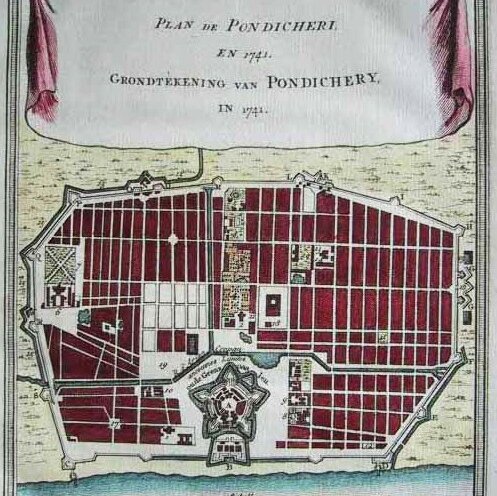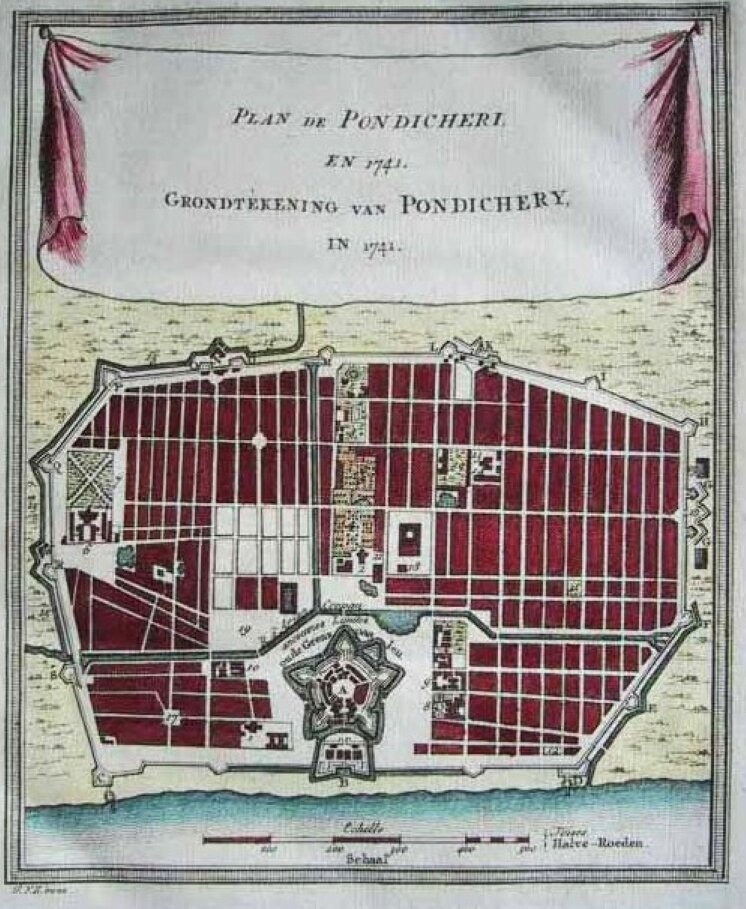Paul Le Faucheur

Paul François Joseph Le Faucheur (31 Oct. 1833, Pondichéry (Puducherry), French Indies — 8 May 1874, Phnom Penh) was a French Navy officer, an entrepreneur and and businessman who became close to HM King Norodom I of Cambodia in the 1860s-1870s, and was involved in several dealings regarding the building of the new Phnom Penh Royal Palace.
The son of Joseph Jean François Le Faucheur (28 Sept. 1807, Puducherry ‑19 Jan. 1861, Saint Denis, La Reunion), superintendent adjunct of the French Navy and Magdeleine Aimée Baude de Bunnetat (12 July 1808, Rivière-du-Rempart, Mauritius Island ‑1842), he was held as a “metis” (mixed-race individual), labeled a “Créole” by French chroniclers . His parents had married on 10 Feb. 1831 at Tharangambadi, Tamil Nadu (then British Indies), and divorced around November 1838. Later on, his father married a Mauritius woman, Malvina Tardivel (1815−1873), who was to give him eight more sons and daughters.
He was still in ‘Bourbon’ (Mauritius Island) in 1848, and claimed to have reached Cambodia in 1858. In his sole written testimony, Lettre: Le Cambodge, he recounted an expedition to the “wild lands of Stung Treng” from which he claimed to have brought back “un grand nombre d’objets en usage dans ces grandes tribus sauvages, armes, idoles, bijoux, ustensiles, etoffes, instruments que je remis au ministere de la Marine au mois d’octobre 1864.” [“a large number of objects in use amongst these large wild tribes, weapons, idols, jewelry, utensils, fabrics, tools that I handed over to the Ministry of the Navy in October 1864.” It is on his way back to Phnom Penh — he claimed — that he stopped at Udong and was introduced to King Norodom –he was also accused to rape an underage girl in the precincts of the Royal Palace. At that time, he viewed as an interloper (“coureur d’arroyos”, a French way to say “buccaneer”), was depicted as such in Jean Moura’s official correspondence, and French Governor de la Grandiere attempted to have him expelled from Cambodia.
In 1865, H.G. Kennedy, a young British consular officer based in Cambodia and accompanying photographer John Thomson to Cambodia, met Le Faucheur (he mispelled his name, ‘Le Foucheur’) in Phnom Penh and noted in his report: “I was told by a Frenchman in his Majesty’s service that the King’s income may be reckoned at about 1000 l. a month; but though Mr. Le Foucheur had ample opportunities for framing an estimate on the subject, I yet conjecture that he may have been anxious, so far as possible, to give me unfavourable impressions respecting the general affluence of the country. […] M. Le Foucheur, the architect of the new Palace, is paid also, as I believe, by the French, but nominally for services as an explorer of the country. His Majesty has besides two interpreters in his employ ; the first one a Spaniard, and the second a Portuguese half-caste. […]”
Le Faucheur was early in envisioning the commercial potential of the vast forests of Cambodia’s Northeast, setting up the first large sawmill in Chhlong, a village south of Kratie on the Mekong River. Later, he developed a limestone quarry in Châu Đốc, on the road from Saigon to Phnom Penh. He made sure the timber and other building materials were bought for the construction of the new Phnom Penh Royal Palace, starting from 1865.
Presenting himself as the King’s personal architect, he seems to have acted as an productive contractor, persuading His Majesty to chose brick-and-mortar over traditional wood for the new Royal Palace in Phnom Penh: “Après trois ans d’instance, le roi s’est enfin decide a construire la ville en brique; a mon depart j’avais deja construit quarante maisons, soixante autres etaient presque acheves, et j’avais passé avec M. Roustan, negociant a Saigon, des contrats pour l’erection de deux cent autres maisons qui devront etre achevees le 31 decembre 1872. J’ai fait batir un poste de police, un marche couvert. Des ordres ont ete laissés pour l’achevement des pavillons de plaisance pour le jardin du roi, on en termine d’autres pour les ambassadeurs, etc…Les ateliers du roi contiennent cinq machines a vapeur qui ont deja rendu d’immenses services. Ces travaux sont executes par moi sur les plans qui me sont donnes et dessines par le roi lui-meme, qui a adopte presque en entier notre architecture europeenne, et il obtient des resultats tres satisfaisants en l’alliant a celle de son pays.” [“After three years of persuasion, the king finally decided to build the city in brick; when I left I had already built forty houses, sixty others were almost completed, and I had signed with Mr. Roustan, merchant in Saigon, contracts for the erection of two hundred other houses, which must be completed by December 31, 1872. I have had a police station completed, and a roofed market. Orders have been left for the completion of the pleasure lodges for the king’s garden, others are being completed for the ambassadors, etc. The king’s workshops contain five steam engines which have already provided immense service. These works are carried out by myself after the plans given to me and designed by the king himself, who has almost entirely embraced our European architecture, and has obtained very satisfactory results by combining it with that of his country.”] (Lettre Le Cambodge, p 33 – 4)
Very active on the Phnom Penh business scene in the first years of the Protectorate, he became so close to the King that Norodom I gave him for spouse a famed dancer of his Royal Ballet, Anak Sok (often called ‘Mi’ Sok, a Khmer word then attributed to Cambodian women who had married foreigners), who was rumored to be one His Majesty favorites. According to Ms Yanine Poc, one of her great-grand daughters, Anak Sok was tall and slender, which predisposed her to perform the Neayrong role. [communication to ADB, July 2024]
Their daughter, Malis Le Faucheur, was to marry Minister of the Palace Veang Thiounn. Around 1915, Thiounn Yang, their daughter, married Poc Duch’s son, Poc Hel, in a matrimonial alliance between dignitaries that lasted several decades.
More about Paul Le Faucheur here.
- Related Books

